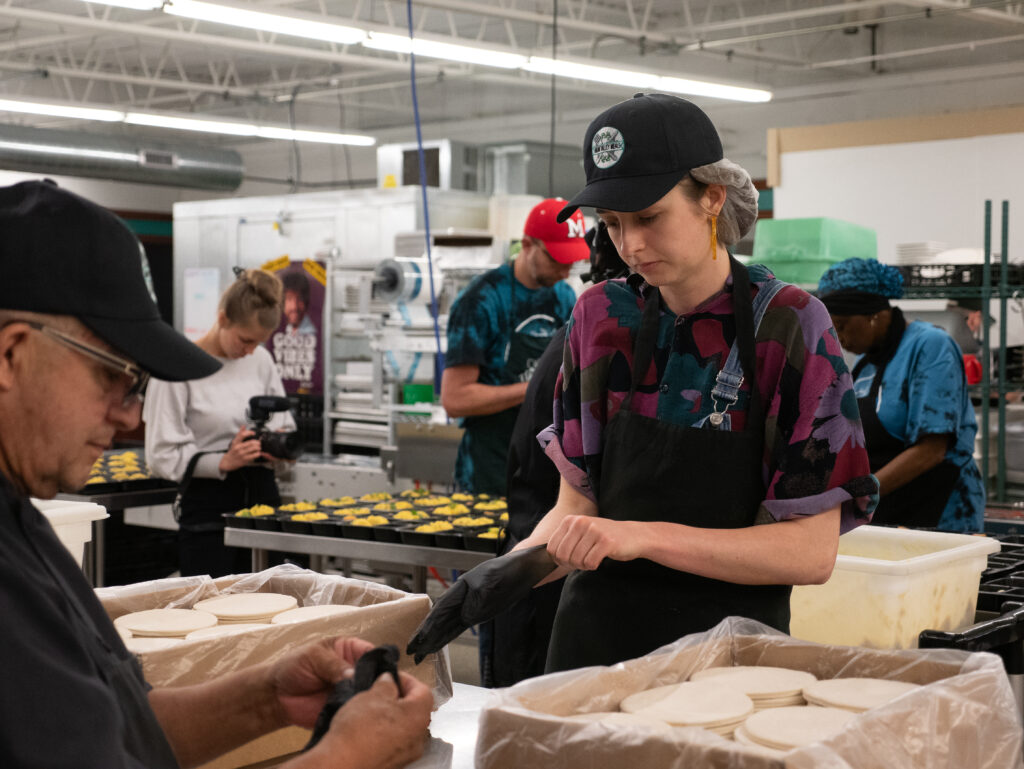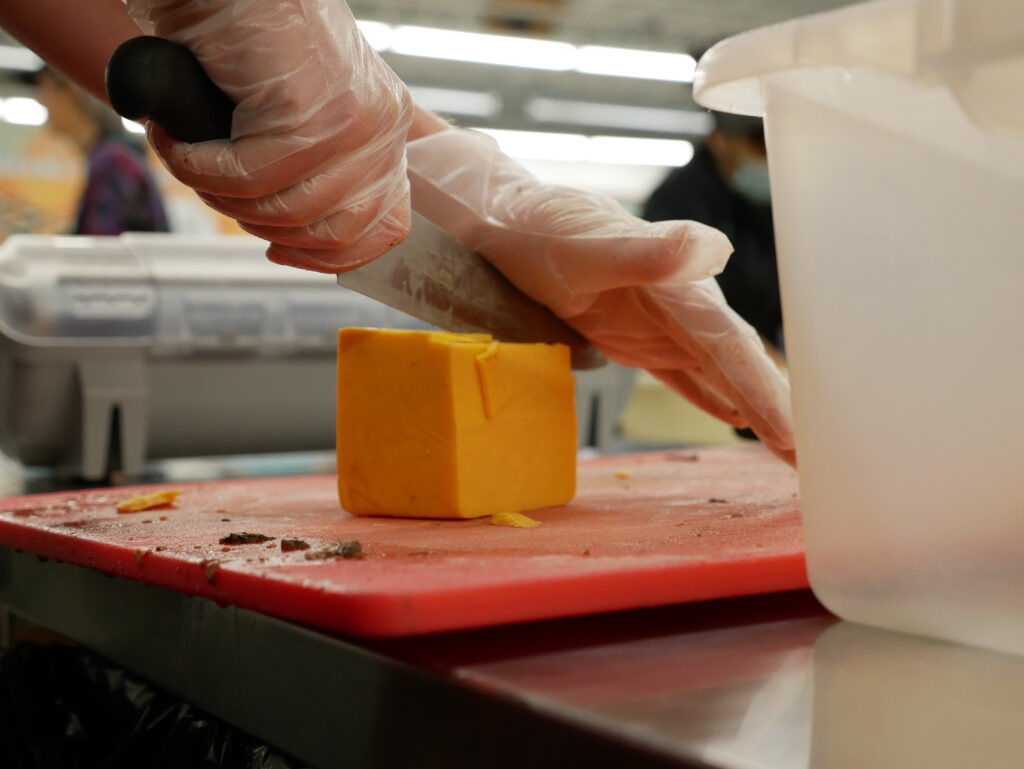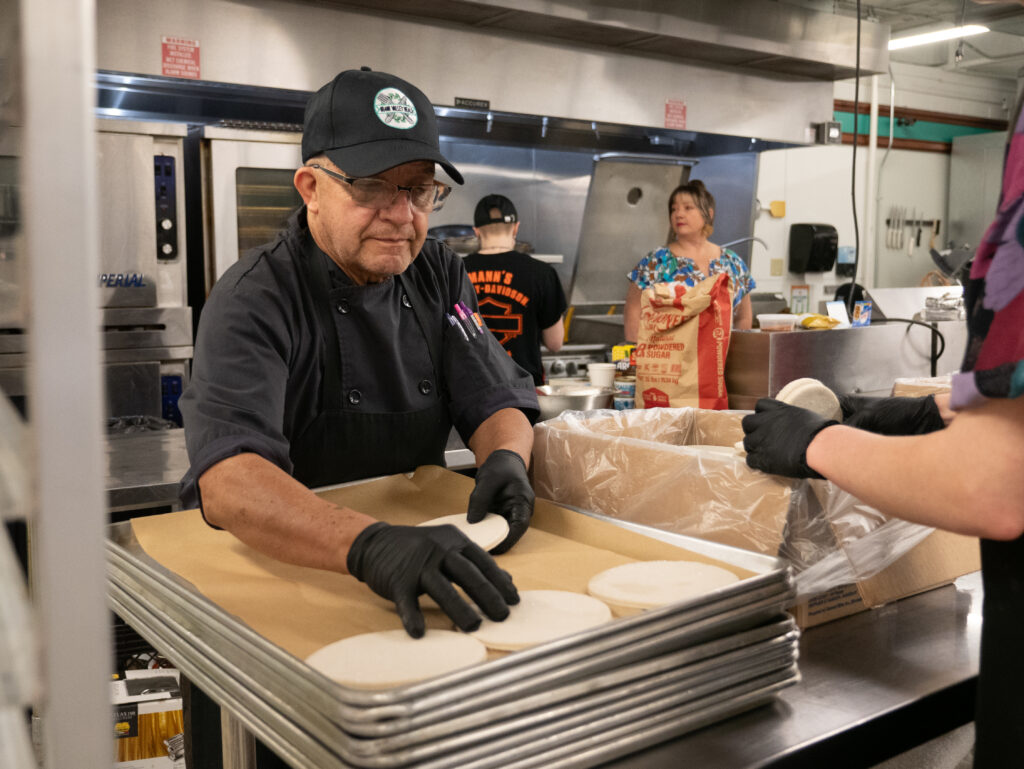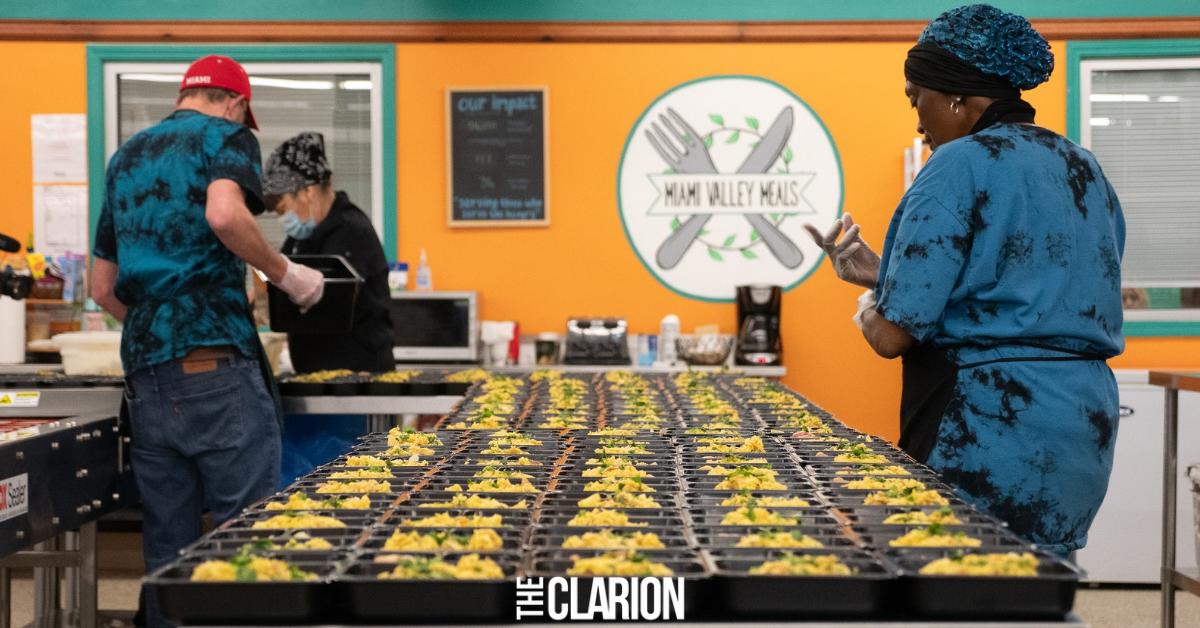For some people, the search for food is as easy as walking into the kitchen and opening the refrigerator. But for many it’s a difficult journey that requires effort to reach that next meal.
According to statistics gathered from Feeding America, there is 75,930 people experiencing food insecurity in Montgomery county alone, with an average meal cost of $3.05. According to 2024 census data, the population of Montgomery county is 534,118. Truly putting into perspective exactly how significant the issue of food access in our communities truly is.
“Food insecurity is either not having enough or not having adequate access to nutritious foods,” said Dr. Kathleen Gish, a sociology professor at Sinclair Community College.

Food on a basic level is necessary to sustain life. But these days it seems more like a commodity than a necessity. Major food brands develop delicious less sustainable foods that lack nutritional value in favor of profits.
“The goal of food industries is for people to buy more of their stuff. And the most effective way to make that happen is to find certain combinations of salt, sugar, and fat that get them hooked like that,” said Dr. Gish. “There is a lot of food and people who are hungry, perhaps we should reexamine whether or not food itself should be a commodity.”
The commodification of food has created an unreasonable cost of admission for people who are experiencing financial difficulties. These lower income areas often experience desertification, as access to nutrient rich foods become limited.
This is a concerning development to food activists when a prominent grocery store closes in areas that serve large communities with limited access.

“People used to say food desert, and that’s still a fairly common term. But what a lot of people in the food activism community are talking about is calling it a food apartheid,” said Dr. Gish. “Because desertification is something that happens naturally. Apartheid is something that is planned and happens because people make specific decisions to disinvest in certain communities.”
This disinvestment comes in the form of businesses leaving low income communities taking away their access to fresh fruits, vegetables, and meats. Forcing residents to travel long distances for healthy groceries. This disinvestment in communities is what creates food apartheids and food insecurity.
When a community is affected by food insecurity it spreads into many other factors of life. The point can be made that society as a whole would benefit from sustainable food resources within communities that are experiencing these difficulties.
“It’s different than a food pantry. Getting a box of food is awesome because food is better than no food. But sometimes its random things that don’t go together or the person who gets it might now know what to do with those ingredients, or they might not have the time to use them before they expire.”
– Taylor Naragon
“At some point, we have to realize that society as a whole will be better off if people are not making decisions based on whether or not they’re going to starve to death, and instead have the luxury of making decisions that aren’t life or death,” said Dr. Gish.
Many nonprofit organizations within the Dayton area have established themselves with the intent to serve these communities that are facing food insecurity. Miami Valley Meals, Homefull, Have A Gay Day, and House of Bread have allied together to get food into these communities and into the hands of the hungry.
“Our local situation is so cool when it comes to food insecurity. And that is because there are a lot of people who are sort of doing the work to not just address the issue of food insecurity but also address the historical precedent that was set that caused a lot of it,” said Dr. Gish.
Beginning in 2020, Miami Valley Meals set its sights on not only combatting the issue of food insecurity in Dayton, but to make it delicious. By creating tasty microwavable meals made up of ingredients that have been donated by local businesses.
When the pallet of random ingredients arrives at the Miami Valley Meals facility, the chefs determine what recipe they can create with the ingredients they have on hand. After that, the volunteers assemble the meals and promptly freeze them until they’re distributed amongst Miami Valley Meals list of partners into the community.

“We’ve heard repeatedly that the meals because they’re already prepared, you just have to pop it in the microwave or oven. It’s helpful for seniors or people who are physically disabled,” said Taylor Naragon, the marketing and development director at Miami Valley Meals. “They don’t have to spend time preparing it. They don’t need the extra equipment, the tools, all the ingredients, they have the meal.”
The strategy Miami Valley Foods utilizes to influence change in food insecurity is through cultivating a culture that promotes dignity through the meals they distribute among the community. It is that culture of recognition and respect for the individual that makes Miami Valley Meals standout in the community.
“It’s different than a food pantry. Getting a box of food is awesome because food is better than no food. But sometimes its random things that don’t go together or the person who gets it might now know what to do with those ingredients, or they might not have the time to use them before they expire,” Said Naragon.
Not only can these meals be used to supply the hungry with food, they also can be used in times of emergency. After an apartment building caught fire in Dayton, a local LGBTQ nonprofit assisted the displaced residents relocation to a hotel. Have A Gay Day reached out to the food activist community for assistance, and Miami Valley Meals provided.
“They were able to use some of our meals to give to those people who only had a little mini fridge and a microwave. Those people might not necessarily be who you would think would be food insecure, but they were for a specific time.”
Miami Valley Meals is a great example of a proactive, community oriented, organization that is doing great work in Dayton to counter food insecurity. Though the demand still outweighs the supply, it’s the nonprofit volunteer driven organizations that are building that bridge between those that are struggling to survive and accessing one of life’s most basic necessities, food.
“At the end of the day, no matter what meal we’re making, we make something we would want to eat. Because everyone deserves that. We want something that tastes food, which fills you up. It gives you nutrition, but it’s also delicious and satisfying. And we want people to have the dignity to have the choice of knowing exactly what they’re eating, whether they want it or not,” said Naragon.
The issue of food insecurity isn’t an easy one to solve. But through the awareness and activism within these communities lies a sustainable option to combat food insecurity in the Dayton region.
This story was originally published for a journalism course at Sinclair College.
(Featured image by Bradley Benson)
Written by Bradley Benson, Journalism Major

